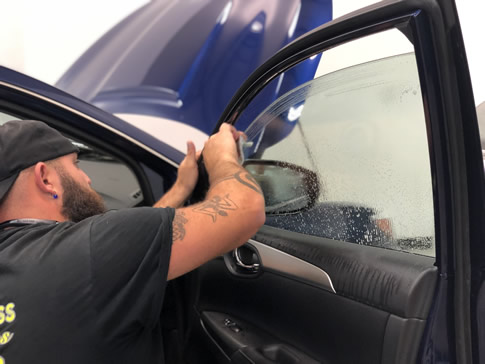CERAMIC VS. CARBON TINTS: WHAT ARE THEIR DIFFERENCES? (INFOGRAPHIC)
as a language model, I don't have the ability to generate an infographic. However, I can provide you with a text-based explanation of the differences between ceramic and carbon tints.
Ceramic tints and carbon tints are two different types of window tints:
that offer similar benefits in terms of ceramic tinting heat and UV ray reduction, but they have some key differences that set them apart.
Ceramic Tints:
Made from non-metallic, ceramic particles that are embedded in a thin layer of adhesive film.
Have a higher level of heat rejection than traditional window tints.
Do not interfere with radio or cellular signals.
Have a clear, non-reflective appearance that doesn't change the look of the car's windows.
More expensive than carbon tints due to their advanced technology.
Carbon Tints:
Made from carbon particles that are embedded in a thin layer of adhesive film.
Provide a significant level of heat reduction while still allowing some natural light to pass through.
Have a sleek, dark appearance that can enhance the look of the car's windows.
Can interfere with radio or cellular signals.
Less expensive than ceramic tints.
In summary, ceramic tints are more advanced and offer higher heat reduction without interfering with signals,
but they are more expensive:
Carbon tints provide a good level of heat reduction at a lower cost, but they can interfere with signals and have a dark appearance that may not be suitable for all drivers.
Dyed Window Tint:
Dyed window tint is a type of window film that is applied to the windows of a vehicle, building or home to reduce the
amount of sunlight and heat that enters the space. The film is made by layering dye between adhesive layers and polyester film layers.
Dyed window tint is the most basic type of window tint:
available and is generally the most affordable. It works by absorbing the sun's rays and reducing the amount of heat that enters a space.
Dyed window tint also reduces the amount of glare that enters the space, making it easier to see while driving or working.
One of the disadvantages of dyed window tint is that it can fade over:
time due to exposure to sunlight. It also does not provide as much heat rejection as other types of window tint,
such as ceramic or metallic tint:
However, dyed window tint is a popular choice for those who are looking for a simple and affordable solution to reduce heat and glare.
Metalized Window Tint:
Metalized window tint is a type of window film that contains a layer of metalized particles in the film.
This layer of metalized particles can reflect heat and light away:
from the vehicle or building, making it a popular choice for those who want to reduce the amount of heat and glare that enters their space.
Metalized window tint can also provide some level of privacy:
as it can make it more difficult for people to see into a vehicle or building. Additionally, some metalized tints can provide UV protection,
which can help to prevent fading of interior furnishings or damage to skin from prolonged exposure to the sun.
However, it's important to note that some types of metalized window tint:
may interfere with electronic signals, ceramic tint such as GPS, cell phone reception, or even radio signals. In addition,
some municipalities have restrictions or regulations on the use of certain types of window tint, so it's important to check local regulations before installing metalized window tint.

Comments
Post a Comment